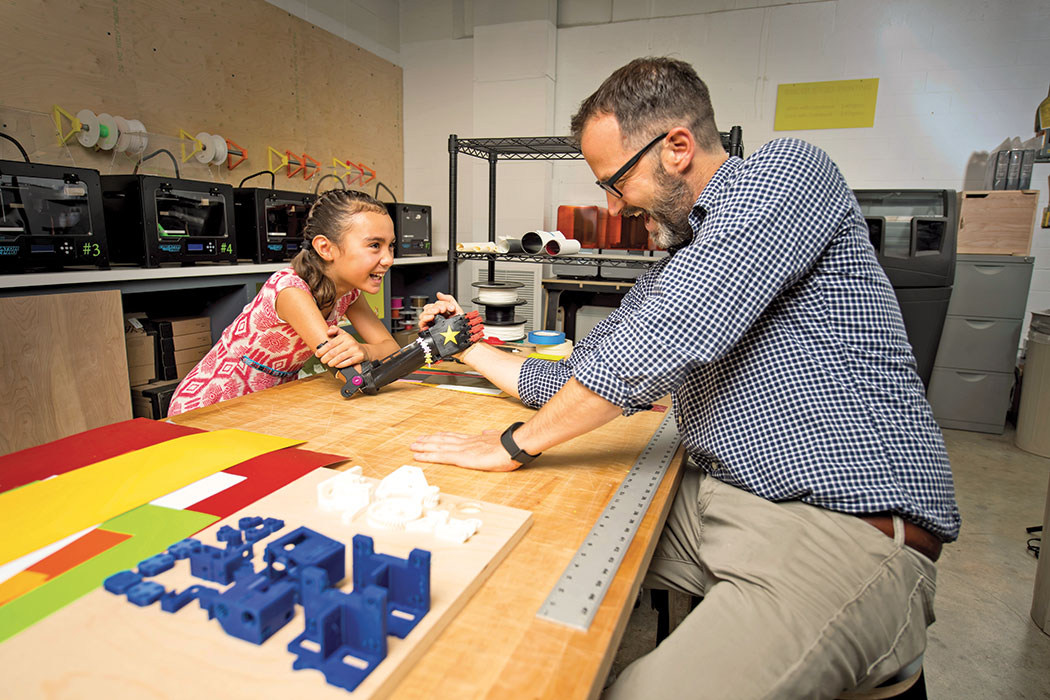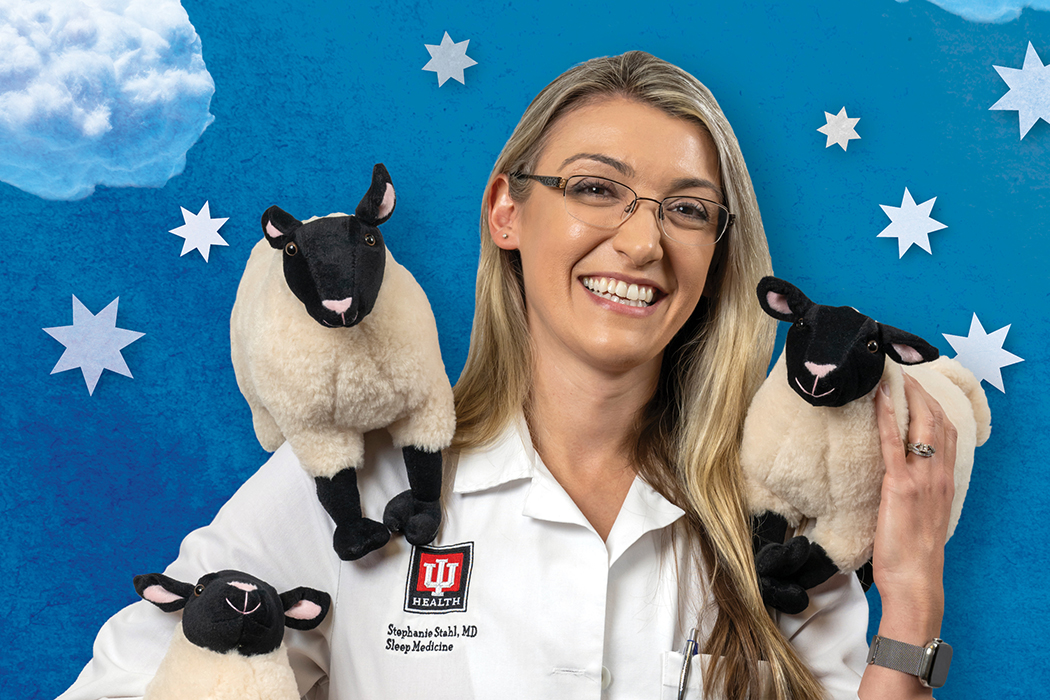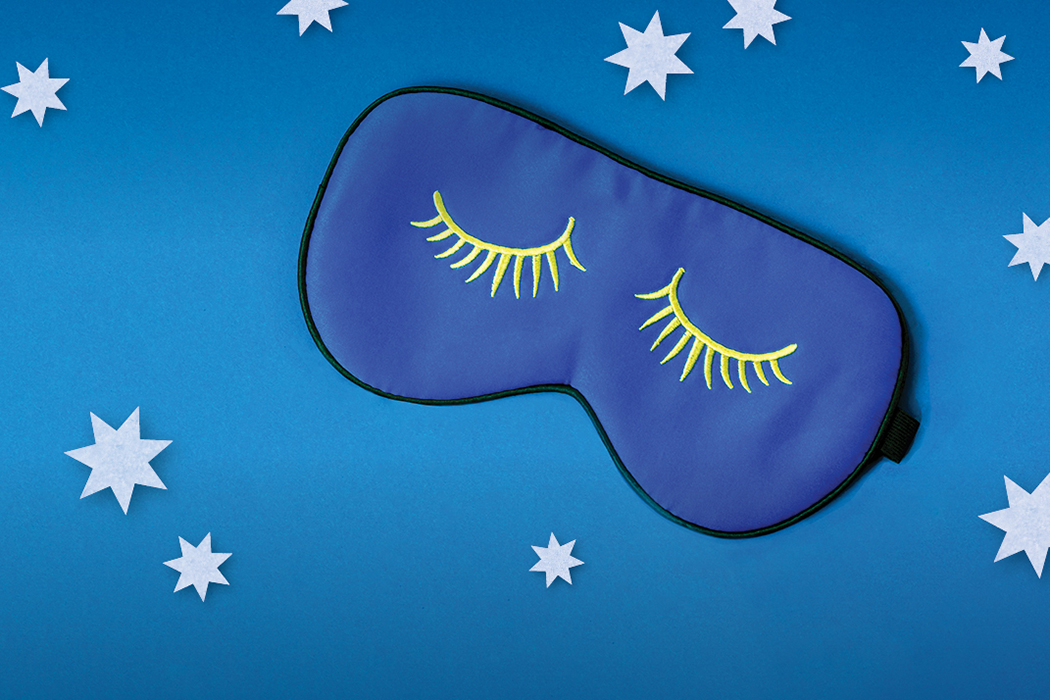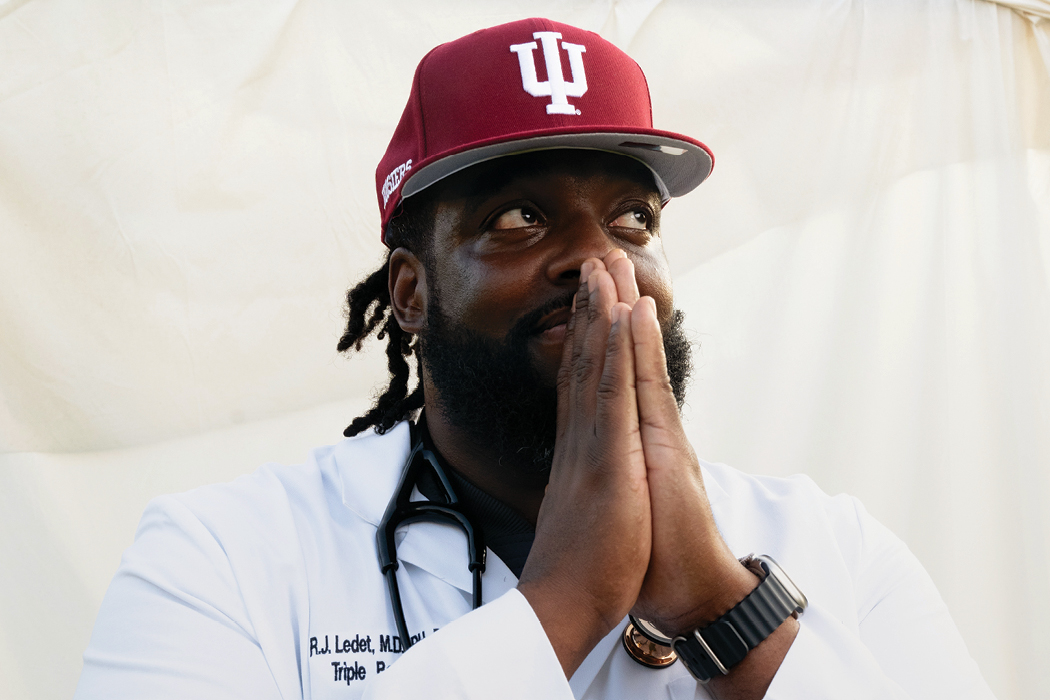A High-Tech Helping Hand

“Design is more than just aesthetics and making things look cool,” says IU School of Art, Architecture, and Design senior lecturer Jon Racek. “It can be about creating change and having some impact on people’s lives.”
That’s exactly what Racek has achieved through his work with Violet Hall, a 9-year-old Bloomington, Ind., girl who was born without a right hand. Over the years, her parents, Brandon (JD’13) and Milet, sought out prosthetics that would help their daughter adapt to her disability, but Violet found them uncomfortable and difficult to use.
Enter Racek, whose daughters happened to play basketball with Violet. He heard about the Hall family’s plight via a Facebook post and reached out, offering his expertise in 3-D printing. Racek then consulted the website of the nonprofit organization Enabling the Future, from which he was able to obtain a design for a customizable but low-cost prosthetic arm and hand that could be made using a 3-D printer.
Racek’s role at IU gave him access to the School of Art, Architecture, and Design’s MAD LAB (Makerspace for Art + Design), which houses a collection of advanced digital-fabrication equipment. He was also assisted by Violet herself, who offered design ideas and even decorated her prosthetic with a star.
“Violet is a very special girl,” Racek says. “She’s very creative about finding solutions. She’d spent nine years learning how to do things without a prosthetic.”
Racek and Violet got to work in the fall of 2016 and had locked down a finished product by April 2017, although Racek says he is still fine-tuning the device.
“The mechanics of the hand are a little tricky,” he says. “Getting things to grasp in a way that’s comfortable for her is probably the biggest challenge we’re dealing with now—there’s still some discomfort. I see this as a process, as something that you keep going with until you get it to the point where it’s working the way you want it to.”
Still, the change and impact that Racek and IU’s MAD LAB have already enabled for Violet are remarkable. Thanks to her new prosthetic—which cost only $32 to make, Racek says, as opposed to $10,000–$20,000 for a conventional device—she’s getting stronger and learning to play the violin. Also, because the 3-D printed prosthetic is so inexpensive to produce, larger versions can be made as Violet grows.
“I think we’ll keep going and continue to adapt it,” says Racek, who adds that Violet will likely use the device only for specific tasks and not as a total replacement for her missing hand. A variety of finely tuned prosthetics, he says, could be produced to suit her needs.
“She will eventually grow out of the arm and maybe want something else, so luckily enough it’s relatively easy to reprint it. I can imagine a whole drawer full of specific prosthetics according to the activity that she wants to do.”
To make the device, Racek used the material acrylonitrile butadiene styrene, more commonly called ABS plastic—the same plastic that’s used in products like Legos. It’s a plastic that’s hard enough for the prosthetic and relatively easy to print with, he says.
Racek adds that the prosthetic isn’t motorized; instead, it utilizes strong, durable rubber bands akin to the type that are used in dental devices like braces and retainers. It also uses fishing line—that’s partly how the hand can close and grasp.

“So, it’s made with a lot of off-the-shelf types of material,” Racek says.
Violet reports that the prosthetic device hasn’t been much of a boon to her bike-riding skills, but using it has helped strengthen her upper arm, and it’s enabled her fulfill her goal of taking violin lessons.
“I think this is the most Violet has been interested in any [type of assistance] for her arm,” Milet Hall says. “The fact she designed it is also amazing. This is such a blessing, and it’s huge for our family—that someone would reach out to help her.”
This article appeared in the Fall 2017 issue of the Indiana University Alumni Magazine, a magazine for members of the IU Alumni Association. View current and past issues of the IUAM.
Tags from the story
Written By
Brian Hartz
Brian Hartz, MA’01, is a journalist and tennis coach based in St. Petersburg, Fla. In addition to writing for the Indiana University Alumni Magazine, he covers business news for the St. Pete Catalyst.



